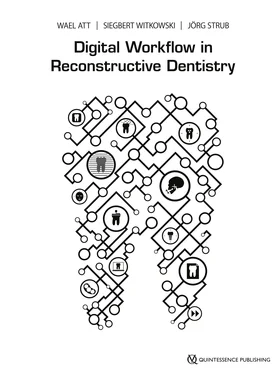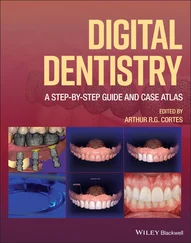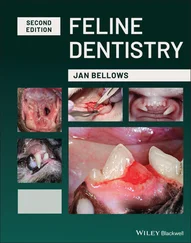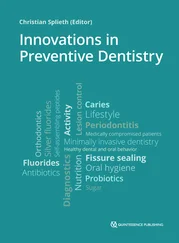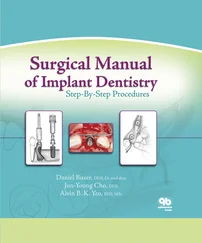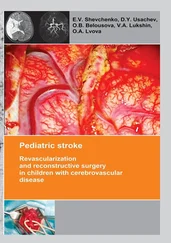CBCTcone-beam computed tomography
CCDcharge-coupled device
CEJcementoenamel junction
CLIPcontinuous liquid interface production
CMOScomplementary metal oxide semiconductor
CNCcomputer numerical control
COSchairside oral scanner
CTcomputed tomography
CTEcoefficient of thermal expansion
DICOMDigital Imaging and Communications in Medicine
DLPdigital light processing
DPIdots per inch
DQEdetector quantum efficiency
DVTdigital volume tomography
EPRelectronic patient records
FDPfixed dental prostheses
FGPfunctional generated pathway
FOVfield of view
FPDflat panel detector (can also mean fixed partial denture)
GDPRGeneral Data Protection Regulation
IGSimage-guided surgery
IOSintraoral scanner
LEDlight emitting diode
LTDlow temperature degradation
MgPSZmagnesium-doped partially stabilized zirconia
MRImagnetic resonance imaging
OCToptical coherence tomography
PACSpicture archiving and communication system
PEEKpolyether ether ketone
PFMporcelain-fused-to-metal
PMTphotomultiplier tube
PSPphoto-stimulated phosphor plate
RDPremovable dental prosthesis
RNCresin nano ceramic
ROIregion of interest
SLstereolithography
SLMselective laser melting
SLSselective laser sintering
STLStandard Tessellation Language
TFTthin film transistor
TIFFTagged Image File Format
TMJtemporomandibular joint
UVultraviolet
VDOvertical dimension of occlusion
Preface
Innovations and their introduction as products for users seem to be the steering wheel of contemporary industry. The domination of technology and tech-driven companies is not surprising. Apple, Google, and Microsoft have been progressively expanding their development and production capabilities to cover areas not primarily related to their main revenue streams. A good example is the burgeoning smartphone industry. Obviously, all major IT companies are now involved in this business. It is needless to mention that this industry has not only opened the way for a great number of hardware development companies, but has also enabled millions of small start-up software and application development companies and individuals to pair their innovations with the major players. It is clear today that it is all about innovation and small, yet unique cutting-edge ideas and their implementation in the proper environment (team, funding, and support). A small search online reveals countless start-ups with very promising innovations.
The picture is quite similar in health sciences. Innovations are being continuously introduced with the ultimate goal of achieving better and faster patient care. In dentistry, the digital revolution has already arrived. Words like scanning, machining, milling, printing, CAD, and CAM are being used on a daily basis. As the avenue of innovations is endless, the current technologies available are all considered blueprints for future developments. Although research and development are ongoing in the field of digital dental medicine, the activities seem to be mainly based on existing dentistry-derived technologies and led by the idea that “we need to do it as well.” A good example is intraoral scanners. Though not new, intraoral scanners are being introduced continuously by nearly every dental company. A critical comparison between the available scanners clearly shows that the implemented technologies in all current scanners are, to a large extent, very similar. Despite continuous introduction of new versions of intraoral scanners, it is amazing that the application spectrum has not been expanded to cover the important indication of full-arch scans, and the complete digital workflow is still lacking. Clearly, “out of the box thinking” is needed in dentistry.
D igital Workflow in Reconstructive Dentistry is the result of efforts made by the academic team at the Department of Prosthodontics, University Hospital of Freiburg. It aims to build a fundamental understanding of the general principles, science, and clinics of digital dental medicine. The information provided within these pages summarizes the various components of the digital workflow in reconstructive dentistry and discusses their advantages and disadvantages. Moreover, insights are provided about upcoming, game-changing technologies. By reading this book, students, clinicians, and researchers will gain and enhance their knowledge about digital dental medicine and identify the areas they need to focus on next in order to integrate the available technologies in their daily work. Clearly, the path of digital dental medicine will not stop here.
We would like to thank all contributors for their dedication to make this book a reality. Much appreciated is the work of the outstanding lab technicians, namely Udo Plaster, Manfred Pörnbacher, Ulrich Lamott, and Wolf Wörner. Likewise, the support and exchange of information with companies, manufacturers, and developers helped tremendously to refine the information provided by this book.
Wael Att Siegbert Witkowski Jörg R. Strub
Contents
Contributors
List of Abbreviations
Preface
1Digital Workflow in Reconstructive Dentistry: An Introduction
Introduction
What is the Digital Workflow?
Data Acquisition
Data Processing/Planning and Treatment Planning
Execution of Treatment or Fabrication
References
2Intraoral Scanners: Current Status and Future Applications
Introduction
Overview of the Digital Workflow
Intraoral Scanners
Data Acquisition Techniques
Efficacy of IOS Systems
Requirements of IOS Systems
Clinical Application of IOS Systems
Implant Capturing Technology Via Photogrammetry
Current Indications and Future Possibilities of IOS Systems
CASE EXAMPLE
Active Clinical Treatment
References
3Laboratory Desktop Scanners
Introduction
Software and Workflow
Accuracy
Conclusions
References
4Optical Face Scanners
Introduction
Scanning Technologies
Applications of Face Scanners in Dentistry
CASE EXAMPLE: DIGITAL WORKFLOW OF FULL-MOUTH IMPLANT-SUPPORTED FIXED DENTAL PROSTHESES
Introduction
Case Description
Acknowledgments
References
5Digital Radiographic Imaging
Introduction
From Analog to Digital
Digital Receptors
Intraoral Digital Imaging: Direct Digital Imaging
Intraoral Digital Imaging: Indirect Digital Imaging
Extraoral Digital Imaging Techniques
Flat Panel Detectors
Extraoral Tomography
Extraoral Projection Radiography
Cone-beam Computed Tomography
Summary and Future Developments
Further Reading
References
6Virtual Registration, Mounting, and Articulation
Introduction
Positioning of the Jaws in the Virtual Space
Concepts of Virtual Articulation
Basic Virtual Articulation
Advanced Virtual Articulation (Nonreference-based Mounting)
Individual Virtual Articulation (Reference-based Mounting)
Real-3D System (Biomechanical-based Systems)
How Far are We From Achieving an Accurate and Patient-relevant Virtual Articulation?
Creating the Occlusion in the CAD
References
7Digital Assessment Tools and Data Manipulation
Introduction
Application in Dentistry
Classification of Digital Assessment Tools
Digital Esthetic and Facial Analysis
Photo Software and Presentation Software
Treatment Planning and Expectation Software
Smile Design Software
Analysis/Evaluation Tools for Digital Charting
Digital Practice
Future Perspectives
Conclusions
References
8Computer-guided Implant Planning and Surgery
Читать дальше
